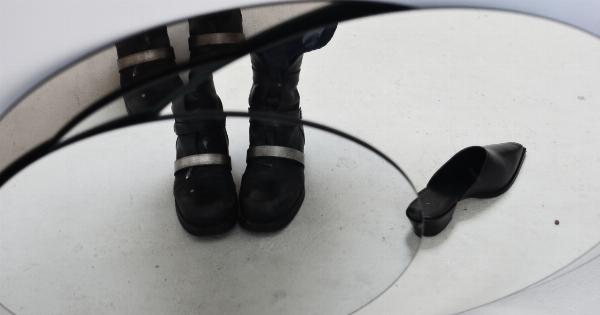Varicose veins refer to enlarged and twisted veins that usually appear in the legs and feet. They are often a result of weakened or damaged valves in the veins, causing blood to pool and the veins to become enlarged.
While varicose veins are a common condition, they can cause discomfort and affect the overall appearance of the feet. Fortunately, there are several effective strategies that can help prevent varicose veins in the feet and maintain healthy vein function.
This article will discuss lifestyle changes, exercise routines, and medical treatments to support vein health in the feet.
1. Maintain a Healthy Weight
Managing a healthy weight is crucial for preventing varicose veins. Excess weight can put additional pressure on the veins, leading to weakened valves and poor blood circulation.
By maintaining a healthy weight through a balanced diet and regular physical activity, you can significantly reduce the risk of developing varicose veins in your feet. Incorporate foods rich in fiber, vitamins, and minerals, and limit your intake of processed and high-sodium foods. Adopting a healthy weight loss plan, if necessary, can also contribute to maintaining vein health.
2. Adopt a Low-Salt Diet
Consuming excessive amounts of salt can contribute to water retention and swelling, placing added strain on the veins. It is important to adopt a low-sodium diet to reduce the risk of varicose veins.
Avoiding processed foods that are typically high in sodium and adding more fresh fruits and vegetables to your diet can help maintain healthy veins. Opt for natural herbs and spices to flavor your meals instead of relying on salt. Staying properly hydrated is also essential for promoting good circulation and reducing the likelihood of developing varicose veins.
3. Regular Physical Activity
Engaging in regular physical activity is one of the most effective ways to prevent varicose veins in the feet. Exercise improves blood circulation and strengthens the muscles and valves in the veins.
Choose exercises that focus on the lower body, such as walking, jogging, cycling, swimming, or yoga. These activities help pump blood from the feet towards the heart, reducing pressure on the veins and enhancing overall vein health. Aim for at least 30 minutes of exercise most days of the week to maintain healthy veins.
4. Avoid Prolonged Sitting or Standing
Prolonged periods of sitting or standing in one position can increase the risk of developing varicose veins. If your job requires long hours of sitting or standing, it is important to take regular breaks and engage in movement throughout the day.
If possible, elevate your feet while sitting to improve blood flow towards the heart. If standing for extended periods, try shifting your weight from one leg to another and walking around to keep the blood circulating. These simple changes can significantly reduce the strain on your feet veins.
5. Compression Stockings
Compression stockings are a popular and effective tool for preventing and managing varicose veins. These specialized stockings gently squeeze the legs, assisting the veins in moving blood more efficiently towards the heart.
They provide graduated compression, meaning the pressure is highest at the ankles and gradually decreases towards the thigh. Compression stockings are available in various compression levels, so it is important to consult a healthcare professional to determine the appropriate level for your needs.
Wearing compression stockings can help alleviate discomfort and reduce the risk of varicose veins.
6. Elevate Your Feet
Elevating your feet is a simple yet beneficial strategy to promote healthy blood flow and prevent varicose veins. When sitting or lying down, elevate your feet higher than the level of your heart to allow gravity to assist blood circulation.
This position helps reduce the pressure on the veins in your feet and legs, preventing blood from pooling and veins from enlarging. Incorporate regular periods of elevation into your daily routine, especially after extended periods of standing or sitting. Even a few minutes of elevation can make a significant difference in supporting vein health.
7. Avoid Tight-Fitting Shoes and Clothing
Wearing tight-fitting shoes and clothing can limit blood circulation and increase the risk of varicose veins in the feet. Tight shoes can constrict the foot, inhibiting proper blood flow and putting additional strain on the veins.
Opt for shoes with a comfortable fit and avoid high heels for extended periods. Similarly, avoid tight socks or tight clothing around the waist, as they may impede blood flow. Choosing clothing items that allow for proper circulation and freedom of movement is important in preventing vein-related issues.
8. Take Regular Breaks to Move and Stretch
To maintain healthy veins in the feet, it is crucial to take regular breaks throughout your day to move and stretch. Sitting or standing in one position for extended periods of time can hinder proper blood circulation.
Incorporating simple stretches, leg exercises, or short walks into your daily routine can help pump blood back to the heart and reduce the strain on the veins. Schedule breaks every hour to perform these movements and prevent blood pooling in the feet.
9. Consider Natural Remedies
Several natural remedies may aid in preventing varicose veins and promoting healthy vein function. These remedies include herbal supplements, essential oils, and herbal creams.
Horse chestnut extract, butcher’s broom, grape seed extract, and witch hazel are some examples of natural remedies that have shown potential in reducing the appearance of varicose veins and supporting vein health. However, it is important to consult with a healthcare professional before using any natural remedies to ensure they are safe for you to use and do not interact with any existing medications or conditions.
10. Seek Medical Treatment
If preventive measures and lifestyle changes do not effectively prevent or manage your varicose veins, it is essential to consult with a healthcare professional.
They can provide appropriate medical treatments to address the underlying causes and symptoms of your varicose veins. Some common medical treatments for varicose veins include sclerotherapy, laser treatments, radiofrequency ablation, and surgical procedures.
A healthcare professional can guide you through the available treatment options and recommend the most suitable approach for your specific condition.
In conclusion, preventing varicose veins in the feet requires a combination of lifestyle changes, regular exercise, and, in some cases, medical treatments.
Maintaining a healthy weight, adopting a low-salt diet, engaging in regular physical activity, avoiding prolonged sitting or standing, wearing compression stockings, elevating your feet, and choosing comfortable footwear and clothing are all effective strategies for preventing varicose veins. Additionally, incorporating natural remedies and seeking medical treatment when necessary can further support vein health.
By implementing these strategies, you can reduce the risk of developing varicose veins in your feet and ensure optimal vein function.




























